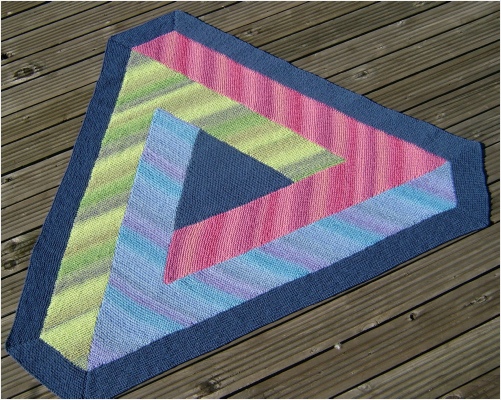

Click to read general information about afghans



Buy a pattern
for this afghan
on the order form
 Buy now
Buy now



RULE OF THREE
A representation of the Penrose Triangle (sometimes referred to as a Tribar). Although it was first created by the Swedish artist Oscar Reutersvärd in 1934, Sir Roger Penrose and his father, Lionel, independently devised this and other impossible figures in the 1950s. Their discoveries are known to many as the underlying constructions of several works by M.C.Escher.
At first glance it seems to be a perfectly normal triangle made from three bars with square cross-


Scroll down for more information about
Rule of Three

RELATED DESIGNS
OPTICAL ILLUSION AFGHANS
OPTICAL ILLUSION CUSHION

CONSTRUCTION INFORMATION
Each of the three bars is made in one piece. They are then stitched together.
The centre triangle is stitched in place. The borders are knitted on by picking up stitches.
Only one yarn is used at a time.

KNITTING INFORMATION
The original was made in Aran yarn but the instructions allow you to make it in any yarn to any size you want.
It would be particularly impressive as a floor rug where it would always
been seen completely flat.
This is a rather unusual shape for an afghan. Nevertheless, it is quite useful as it is long in the middle to cover your feet and can wrap round your body. If it isn’t too long, you could also wear it as a shawl.
The afghan is a 2-